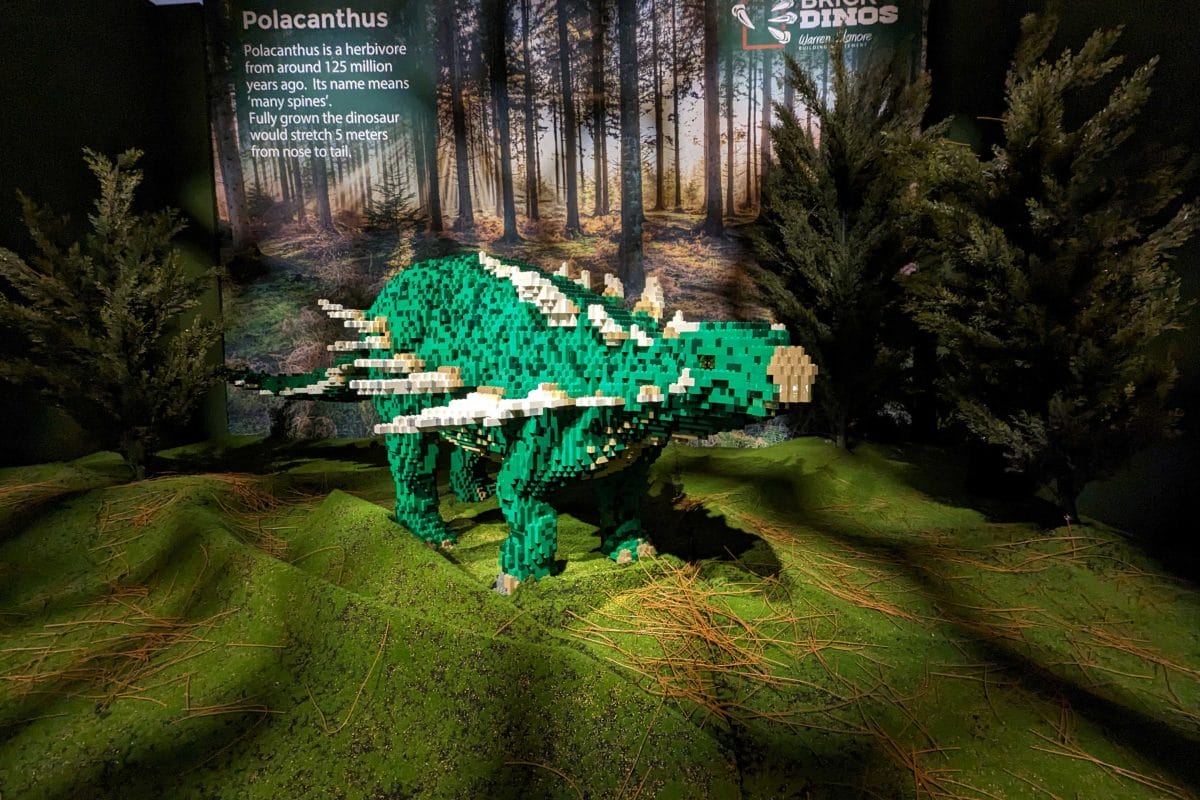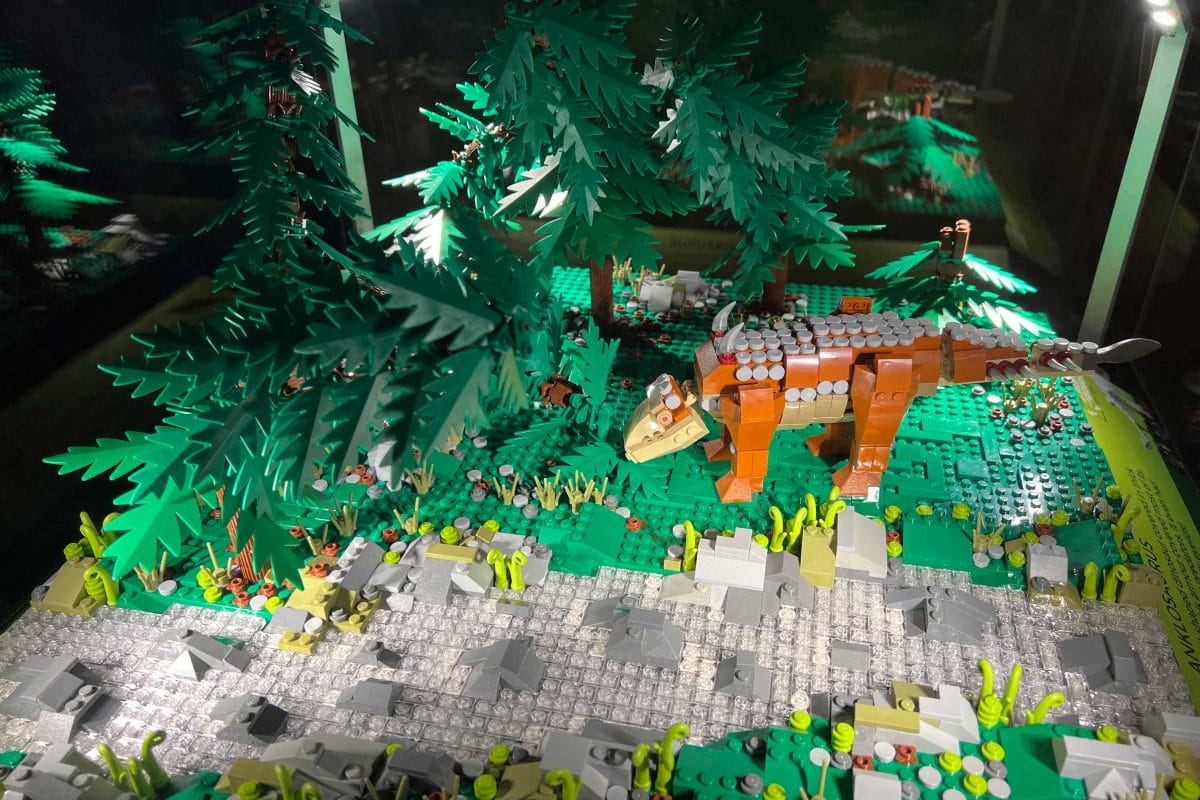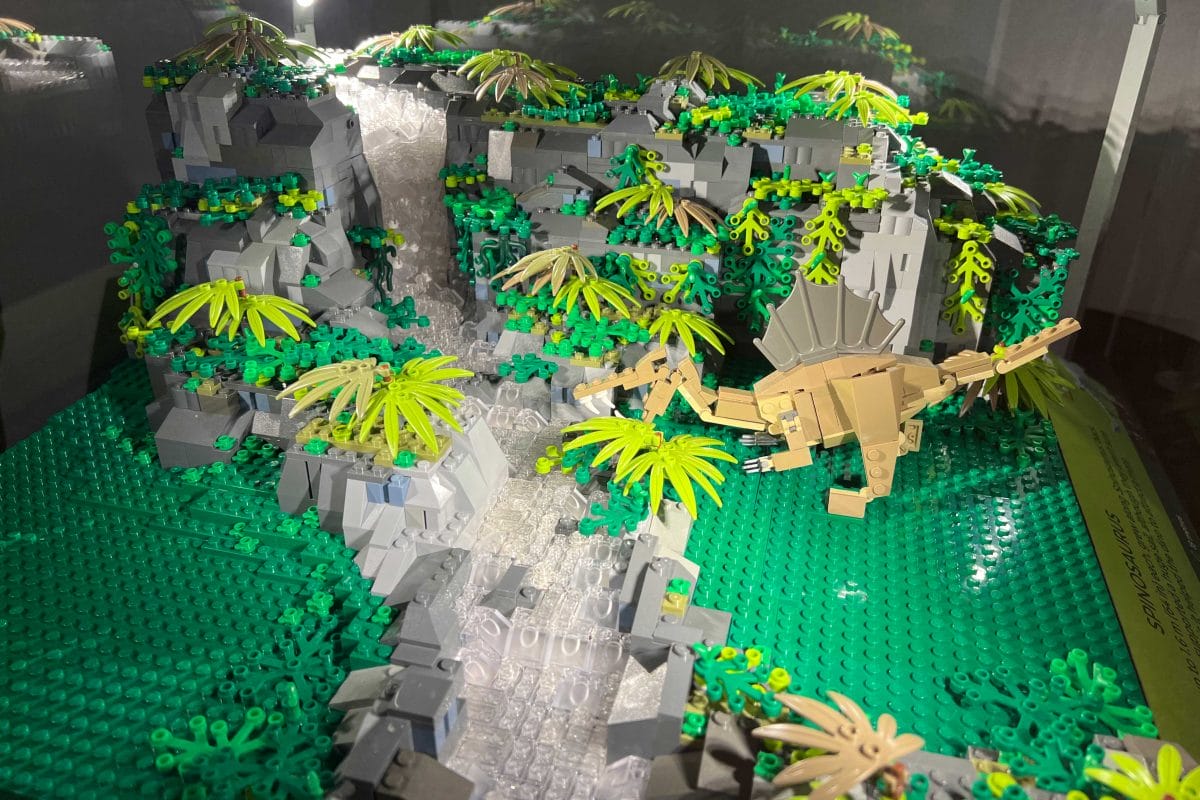Make your way past the swimming plesiosaur and the soaring pterosaur, around the corner and you will find a two-tone green creation with lots of spikes and the cutest reptilian face you’ve ever seen. Here, is the Polacanthus.

Pronounced: pol-ah-KAN-thus
How big? The Polacanthus could grow to be between four and five metres in length. That’s about two fully grown grizzly bears standing nose to tail.
How did it walk? On four legs.
What did it eat? Polacanthus was herbivorous, meaning it ate plants. It came from a group of dinosaurs that had lots of (ironically) leaf-shaped teeth, to cut through the vegetation.
What does its name mean? The name Polacanthus means ‘many spines’ in Ancient Greek, which refers to its exciting array of armour.
What type of dinosaur was Polacanthus?
Polacanthus was a type of armoured dinosaur, and it sits within the group Ankylosauria. Probably the most famous dinosaur of this type is the group’s namesake Ankylosaurus. Ankylosaurus was slightly larger than Polacanthus and had a huge club on the end of its tail. You’ll have met Ankylosaurus if you’ve seen the epic film, Jurassic World. There is also a miniature one in Brick Dinos.

The ‘armour’ on dinosaurs like Ankylosaurus and Polacanthus was formed of bone. This was either plates within the skin or extra types of ornamentation (sticky-outy-bits) like horns on the head or spikes along the flanks.
As you can see in Brick Dinos, Polacanthus has spikes of different sizes along its back and sides. It also had a huge plate of bone across its hips, called a ‘pelvic shield’. This would have looked like a partial turtle shell!
The purpose of the armour in these dinosaurs is thought to be protection. We know that herbivores were preyed upon by carnivores. Several fossil specimens of different species have been found with puncture marks in them from teeth, showing direct evidence for battles of life and death.
When did Polacanthus live?
Polacanthus lived 125 million years ago, during a part of the Mesozoic Era called the Cretaceous Period. The Cretaceous Period is the one that came straight after the Jurassic – as in the famous film and book Jurassic Park. It ended in the mass extinction that (sadly!) ended the ‘reign of reptiles’, ie the non-bird dinosaurs.
Polacanthus was first described in 1881 by John Whitaker Hulke, using a specimen known as a ‘holotype’. Holotype refers to the first specimen that is described under a new name. The specimen he described is held in the collections of the Natural History Museum in South Kensington, London.
Where did Polacanthus live?
Polacanthus is only known from England, with many of the specimens hailing from the Isle of Wight. The Isle of Wight is a fantastic place to find dinosaur fossils, and a number of different species have been discovered there, from herbivores like Polacanthus and Iguanodon to Eotyrannus (related to Tyrannosaurus) and the gigantic Spinosaurus, which is the largest known predator known across Europe.

Were there different types of Polacanthus?
Scientists believe that there is only one species of Polacanthus, called Polacanthus foxii (Polacanthus is the genus and foxii is the species). In the past, many species were named and put in the genus of Polacanthus. They have since been moved to other groups, or found to be the same species as Polacanthus foxii.
The reason for the confusion is that when we find dinosaur skeletons they are very rarely complete. Most often we just find the odd bone or a small group of bones. This means that palaeontologists – the scientists that study prehistoric life – are often trying to decide what animal a fossil belonged to without being able to see the whole animal. It’s a bit like trying to work out what the picture on a 1000 piece jigsaw is, when you only have five puzzle pieces and no box!
If more fossils are discovered of the same species, it helps palaeontologists to piece together the whole animal. Fossils that were discovered years, decades, or even over a century ago, can be re-studied and compared to more recently found fossils. This means that new information on these ‘old bones’ can come to light. This is just one of the many things that makes being a scientist exciting!
I hope you enjoy the Brick Dinos exhibition as much as me (which is a lot!). Once you’re done, perhaps you can see what other dinosaurs and fossils you can find throughout the Museum


